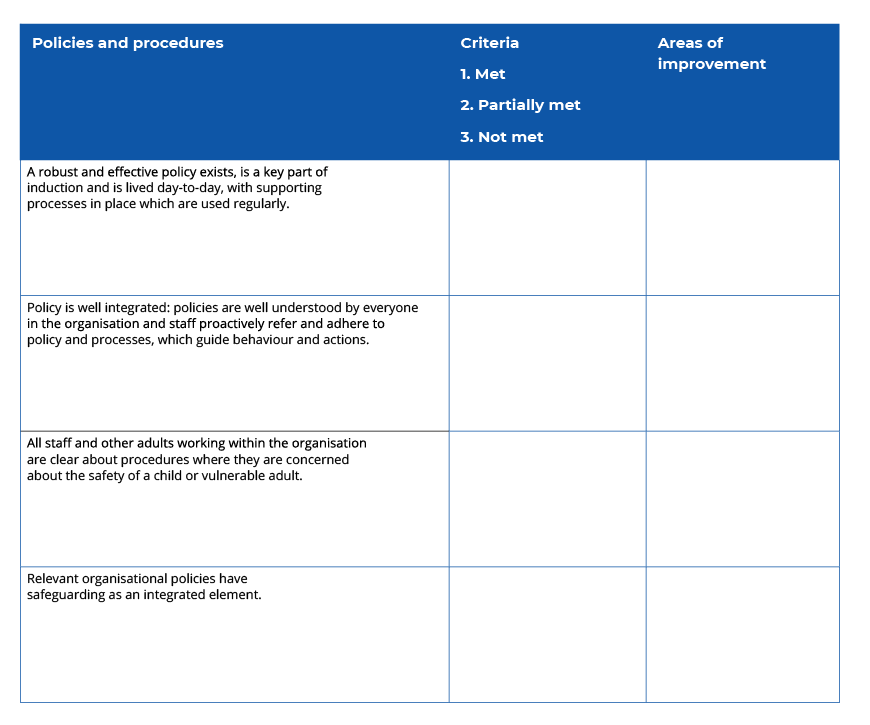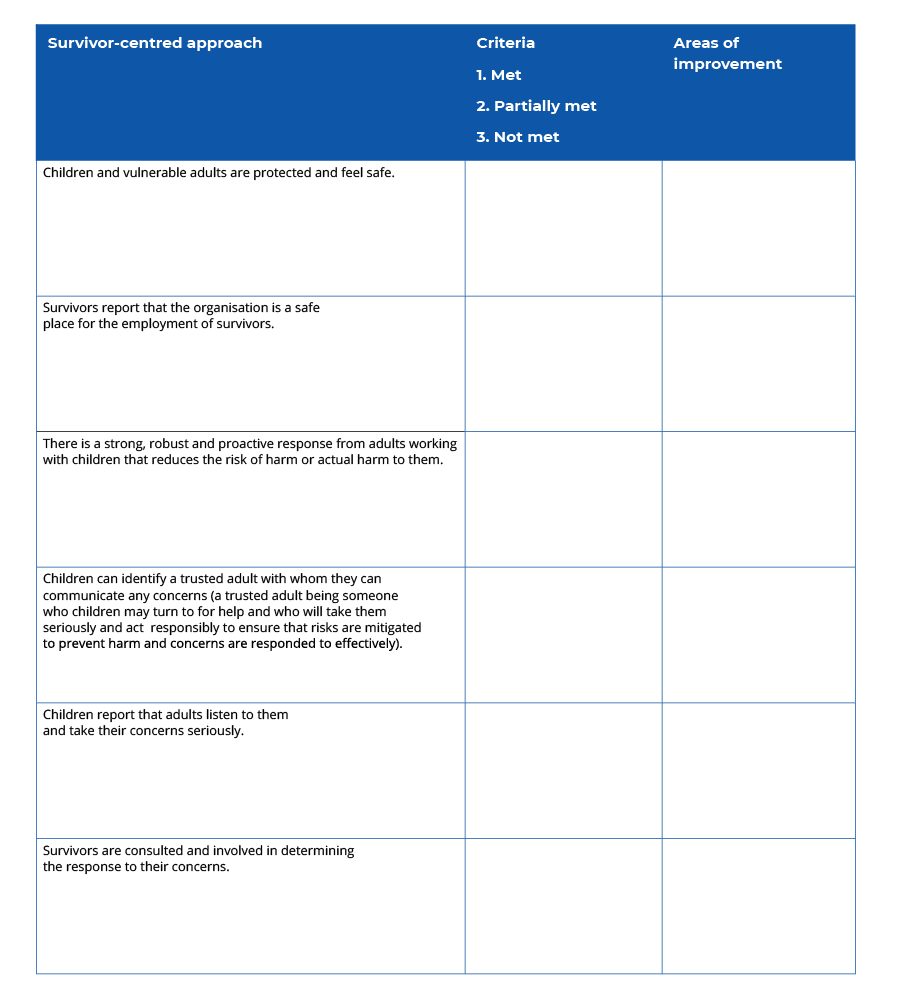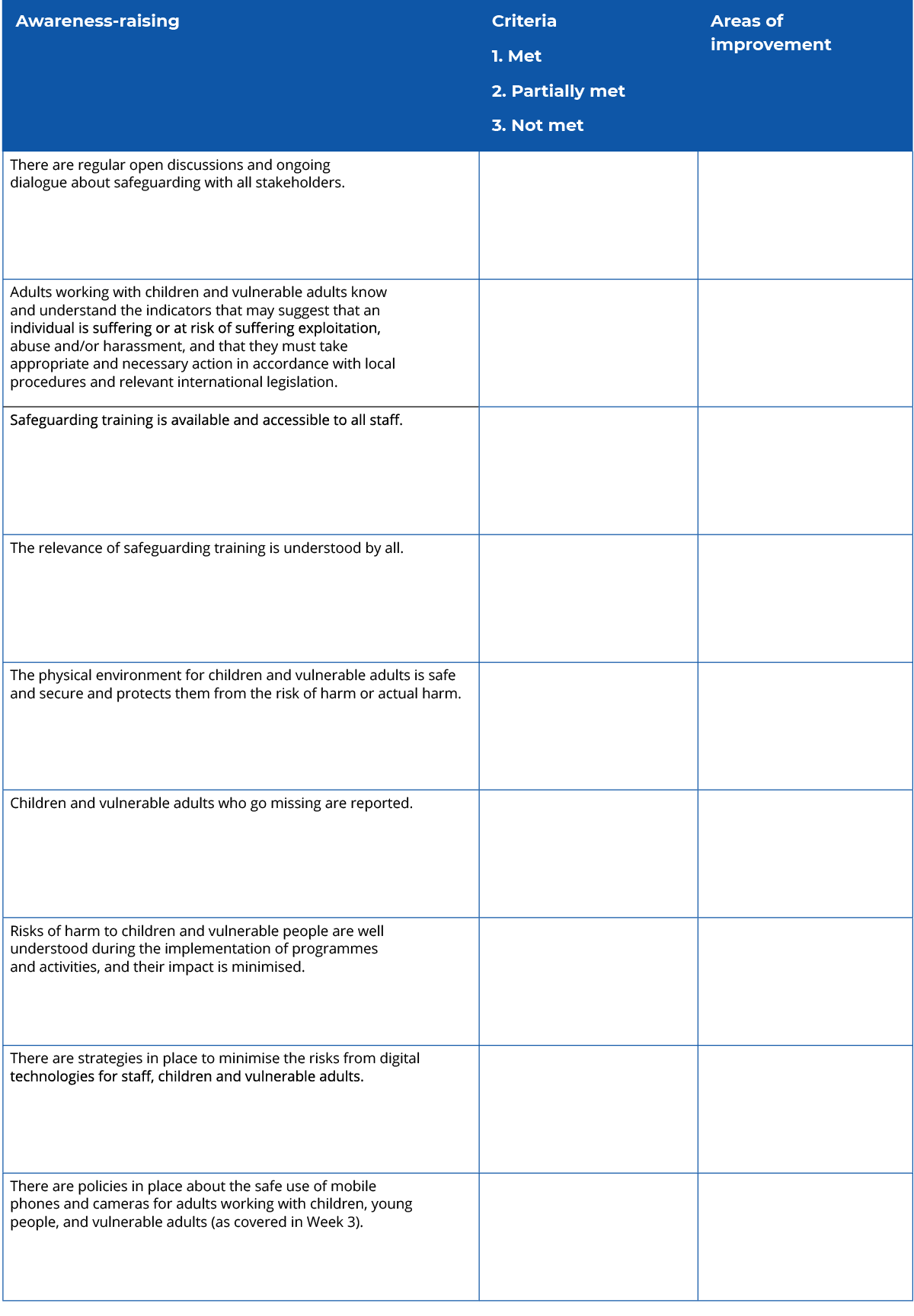Unit 6: Learning and organisational culture
6.4 Monitoring, learning and good supervision
Monitoring tools to measure safeguarding
It’s important that organisations monitor the progress they have made in implementing the many safeguarding measures they may have identified and developed since they started their safeguarding journey.
For example, when monitoring safeguarding practice and culture in education, the Girls’ Education Challenge developed a monitoring tool which includes monitoring the knowledge and awareness of teachers to ensure they understand their safeguarding responsibilities.
To elicit feedback and complaints from students, they hold focus group discussions by undertaking a risk assessment to ensure no further harm ensues from the activity.
Other possibilities might include surveys (including e-surveys) and focus groups to gage feedback and monitor how safeguarding measures and being implemented.
Action Learning Sets
Action Learning Sets (ALS) is a process that was developed in the 1950s.
ALS is a simple but powerful way for individuals to learn from each other and identify actions which could make a positive difference.
The emphasis is on learning from real experiences and challenges, using the knowledge and skills of small group stakeholders, and utilising skilled questioning to produce fresh ideas for action.
The questions used during the session could be:
- What do we really want to achieve?
- What is stopping us?
- What could we do about it?
- Who has knowledge that we could use?
- Who has an interest in solving the problem?
- Who has the power to get something done?
(Source: Reg Revans, Action Learning)
Learning reviews
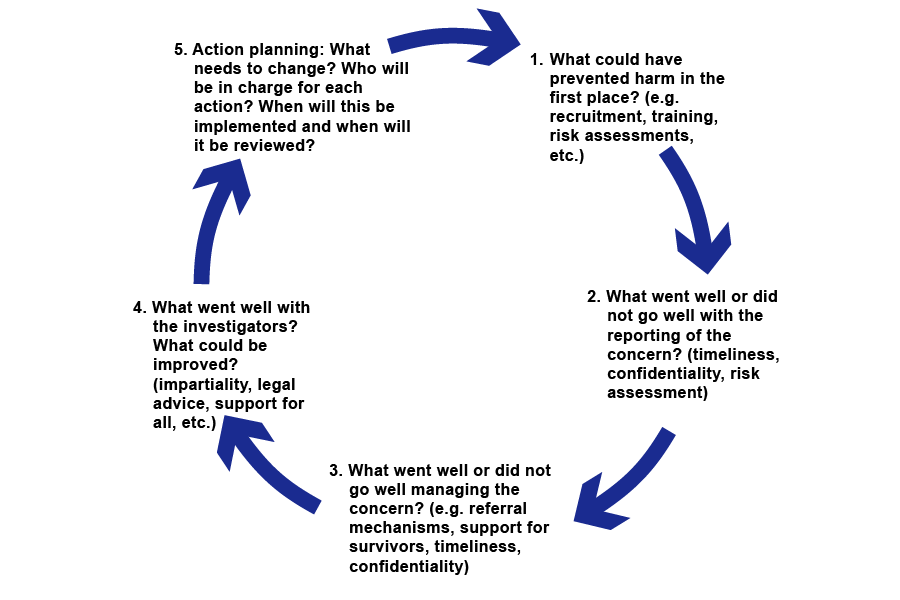
(© Adapted from Child Safeguarding Practice Review, Working Together, 2018)
It is good practice for organisations to hold learning reviews whether there has been a ‘near miss’ or a full investigation into a safeguarding concern.
The purpose of a learning review is to:
- Identify improvements to be made to safeguard and promote the welfare of victims/survivors.
- Seek to prevent or reduce the risk of recurrence of similar incidents.
- Establish whether there are lessons to be learnt from the case about the way in which organisations can work in a safer way.
- Identify clearly what those lessons are, how they will be acted upon, and what is expected to change as a result.
- Improve internal and inter-agency working.
Learning reviews should be facilitated by someone who was not involved in the managing or investigation process of the safeguarding concern. Those who were involved could either write in their feedback or be present at a meeting where views are elicited to the questions in the diagram above.
Questions the learning facilitator could ask include:
- What went well with the reporting of the concern? What could be improved on?
- What went well with the organisational management and response to the concern? What could be improved on?
- What went well with the investigations to that concern? What could be improved on?
- What went well with the next steps to the concern. What could be improved on?
It’s important for organisations to set aside time and a safe space to reflect on their safeguarding practice, particularly after a near miss or investigation.
Safeguarding people is an emotive and sensitive subject. It’s important that everyone understands that it is a collective effort to improve the culture and requires practice within the organisation to keep people safe.
Embedding a culture of learning is not about blaming anyone, but rather clarifying how organisational factors can cause harm, using techniques to avoid bias, being factual, telling it as it was, transparency and accountability.
|
Have you ever used a learning review in your organisation? Might they be helpful in identifying valuable learning from previous experiences? |
Good supervision
![]()
Watch the video above in which Sherine, a learner on this course, has a question about learning reviews.
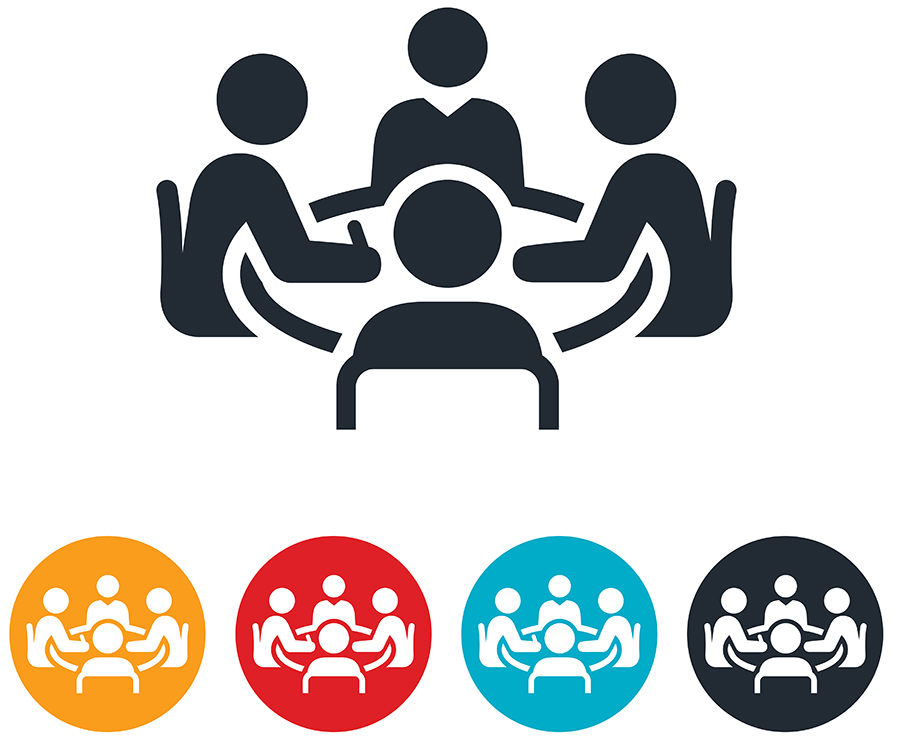
A key monitoring tool for good safeguarding culture is supervision.
This is an important role for line managers, and they need to know how to manage those who are in stressful positions, such as Safeguarding Leads or focal persons.
You can be supported using good supervision methods such as:
Reflective supervision
These are sessions which allow you the opportunity to discuss uncertainties and to explore your practice critically but in a supportive and safe context. Reflective supervision sessions involve thinking through previous practices and exploring what happened, what you did, and why you made decisions and acted or behaved in particular ways. Discussing how you feel about the actions of others is also important.
Reflective supervision enables continual learning by identifying what you did well, what you could have done better and what you will do next time.
Collaboration supervision
The concept of collaboration (or teamwork) emphasises sharing the responsibility and control of power. Power can be derived from many sources, among them being the position in the organisation, the ability to lead and inspire, the sphere of influence, and the network of colleagues. But most of all, power is derived from knowledge – about children and families, about the field, and about us in the workplace.
While sharing power is the goal of collaboration, it does not exempt supervisors from setting limits or exercising authority. These responsibilities remain firmly within the supervisor’s domain. Collaboration does, however, allow for a dialogue on issues affecting the staff person and the programme.
Regular supervision
Neither reflection nor collaboration will occur without regular interactions. Supervision should take place on a reliable schedule, and sufficient time must be allocated to its practice. Supervision time is precious and may be hard to come by. It should therefore be protected from cancellation, rescheduling or procrastination.
(Source: ZerotoThree)
Supervisors should be actively listening during supervision. The supervisor provides an empathetic, non-judgmental ear to those they supervise. Working through complex emotions in a ‘safe place’ allows the supervisee to manage the stress they experience on the job. Good supervision requires open communication which flows freely in both directions and is protected from ‘outsiders’. Both parties assume the best about each other.
The supervisory relationship is one characterised by a feeling of trust and safety, where difficult issues can be discussed without fear of judgment, disclosure, or ridicule. Open communication implies curiosity and active listening
Show respect to each other and treat others as you would want to be treated in the discussion forum. Remember to keep confidentiality and not reveal identifying details of children or vulnerable adults in your comments.
|
Activity 6.4 Checklist on a good safeguarding culture We are concluding this unit with some checklists which you can use to review aspects of your organisation’s safeguarding culture. They are on policies and procedures, a survivor centred approach, and awareness raising. For each statement in the tables consider how your own organisation compares and identify any areas for improvement. Here is a writable version of each template shown below. You can type into this PDF form and then save it and/or print it. Policies and procedures
Survivor-centred approach
Awareness-raising
(Source: 20 core elements: a toolkit to strengthen safeguarding report-handling – Bond, 2019) |

